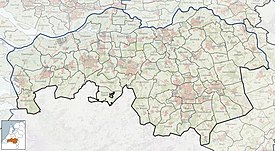
Egmond Castle, also called the Ruins of Egmond, is a ruined medieval castle in the Dutch province of North Holland. It is located in Egmond aan den Hoef in the municipality of Bergen and lies about 7 kilometres (4.3 mi) west of Alkmaar. The castle dates from the 11th century and is the ancestral seat of the Egmond family, whose members became sovereign Dukes of Guelders, Counts of Egmond and Princes of Gavere, Counts of Buren and Leerdam. It is a national monument of the Netherlands.
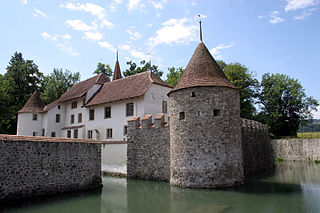
Hallwyl Castle is one of the most important moated castles in Switzerland. It is located on two islands in the River Aabach, just north of the northern end of Lake Hallwil in the municipality of Seengen in the canton of Aargau. Since 1925, it has been open to the public, and since 1994 it has been owned by the canton of Aargau and is part of the museum of Aargau.

Bokhoven Castle was a big defendable castle in Bokhoven, the Netherlands. A moat and part of the northern wall of the outer bailey are all that reminds of the castle.
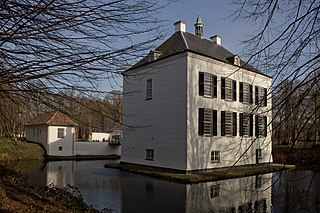
Loon op Zand Castle, is a castle in Loon op Zand, in the Dutch province of North Brabant. The current building looks like a manor, but is actually the keep of a medieval castle.

Heusden Castle is a ruined major castle in Heusden.

Tongelaar Castle is located between Mill and Gassel in North-Brabant, Netherlands.

Kasteel Giessen was a castle in Giessen, Netherlands. It was rediscovered in 2013, but was not made visible.

Oud Haerlem Castle was a very strong castle in Holland. In 1351 it was demolished after a long siege.

Polanen Castle was a castle located in today's Monster, South Holland in the Netherlands. The ancestral home of the Polanen family, it suffered a siege in 1351 and was demolished in 1394. It was replaced by a small manor somewhat to the south.

Te Riviere Castle is a ruinous castle located in Schiedam, Netherlands.

Spangen Castle was a medieval castle near the village Overschie. It has disappeared completely. The Rotterdam city quarter Spangen was named for the castle.
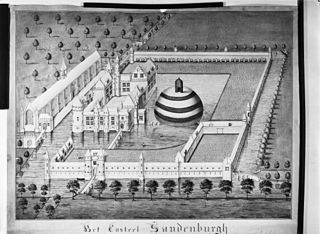
Zandenburg was a famous castle just south of Veere. Nothing remains of it, except some foundations below ground level.

The Burcht of Voorne is a ruinous motte-and-bailey castle in Oostvoorne, Netherlands. It was home to the Lords of Voorne, burgraves of Zeeland.

Marquette Castle is an 18th-century manor house in Heemskerk, Netherlands, occupying the site of the previous 13th century Heemkskerk Castle, or Huis te Heemskerk.

Hellenburg is a ruined castle near Baarland, in Zeeland, Netherlands.

Sint-Maartensdijk Castle was a castle with a rich history. Except for a part of the moats nothing remains of it.

Oostende Castle is a castle in Goes, the Netherlands. The current castle was part of a motte-and-bailey castle. Its grounds formed the outer bailey. The motte was directly south of it, now under the Maria Magdalena Church.

Zaamslag Castle was a Motte-and-bailey castle in Zeelandic Flanders, the motte remains. It is called Torenberg.
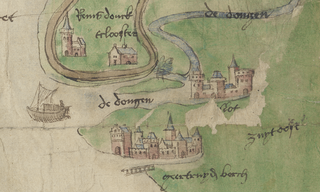
Geertruidenberg Castle was a major medieval castle in Geertruidenberg, then part of County of Holland now in North-Brabant, Netherlands
The Siege of Geertruidenberg (1351–1352) was a long siege of Geertruidenberg Castle during the first of the Hook and Cod wars.

